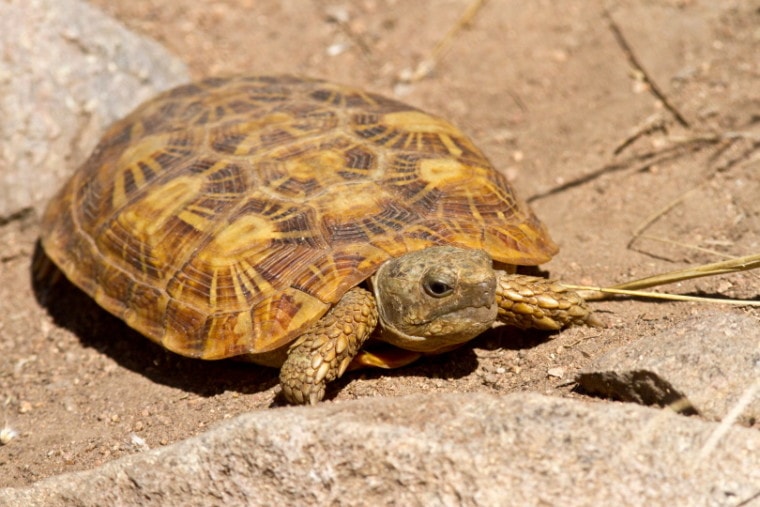
The pancake tortoise does not eat pancakes. They received their name because of the shape of their shell, which is flatter than the typical tortoise. This tortoise is unique in that its shell is not only flat, but also thin and flexible thanks to the openings in the shell bones. Read on to learn more about this unique and fascinating reptile!
Quick Facts about the Pancake Tortoise
| Species Name: | Malacochersus tornieri |
| Family: | Testudinidae |
| Care Level: | Easy to Moderate |
| Temperature: | 70-75° F and 100-108° F |
| Behavior: | Climbers, active, enjoy basking |
| Color Form: | Tawny to golden brown |
| Lifespan: | 25+ years |
| Size: | 6 to 7 inches |
| Diet: | Dry & fresh grass, greens, hay |
| Minimum Tank Size: | 40+ Gallon |
| Tank Set-Up: | Rock pile, bark, coconut bedding, rabbit pellets |
| Compatibility: | Largely solitary creatures |
Pancake Tortoise Overview
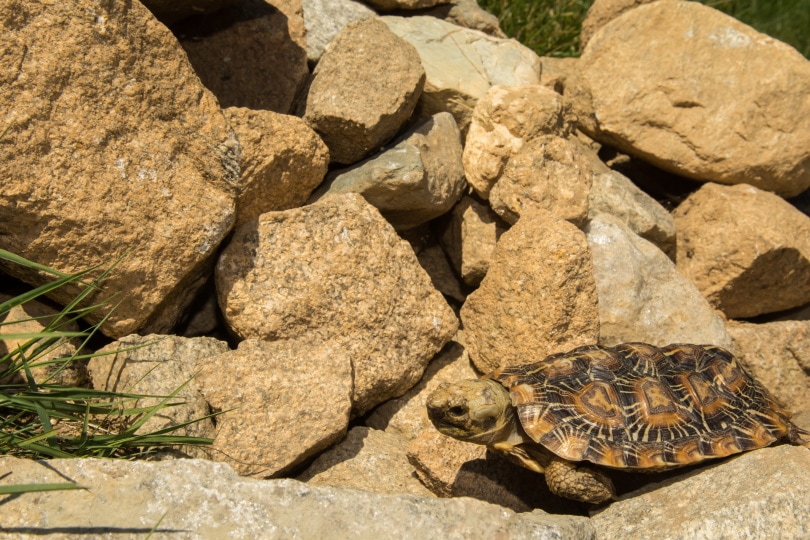
The pancake tortoise comes from southern Kenya and northern and eastern Tanzania but was also introduced to Zimbabwe. Its habitat in the wild ranges from grasslands to savannas in tropical and subtropical areas and rocky hills and terrain in dry scrub areas.
The scrub and rock piles that these tortoises occupy can be 100 to 6,000 feet above sea level. The rocky outcrops that the pancake tortoise prefers are called kopjes, which are generally small rocky hills found on the African grasslands.
The pancake tortoise is from the species Malacochersus tornieri and is actually the very last living member of the Malacochersus class. They are also called the softshell tortoise, crevice tortoise, Tornier’s tortoise, and the African pancake tortoise.
These tortoises are diurnal, so they are active in the morning, late afternoon, and early evening. They spend their time basking, feeding, and exploring their habitat but typically only spend about one hour at a time being active after emerging from their shelters.
How Much Do Pancake Tortoises Cost?
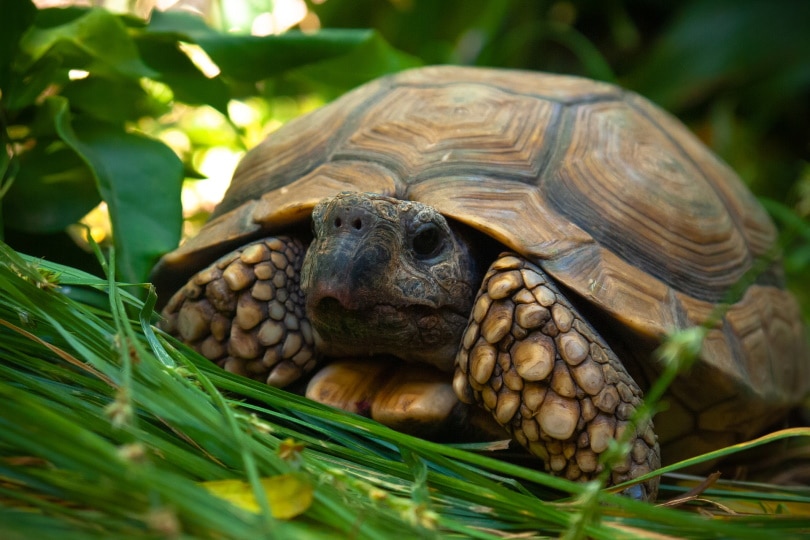
These little tortoises are more expensive than many other species as they are rather rare and definitely unique. They can range from $500 to $1,700 in price, depending on age, size, and sex.
The most important thing is that you purchase your pancake from a reputable breeder and make sure it has been captive-bred. In the wild, the pancake tortoise was on the International Union for Conservation of Nature’s 2019 “Critically Endangered” Red List.
Typical Behavior & Temperament
Here is where the pancake tortoise truly shines. Not only are they unique because of the shape and flexibility of their shells, but because of their behavior.
We’re all familiar with how turtles and tortoises pull their heads and legs inside their shells to protect themselves against predators. The pancake tortoise actually runs away from threats and wedges itself inside the closest crevice of their rocky residence.
These tortoises are quite friendly and smart with no known aggression and will learn to recognize you and might even enjoy the occasional head rub.
Appearance & Varieties
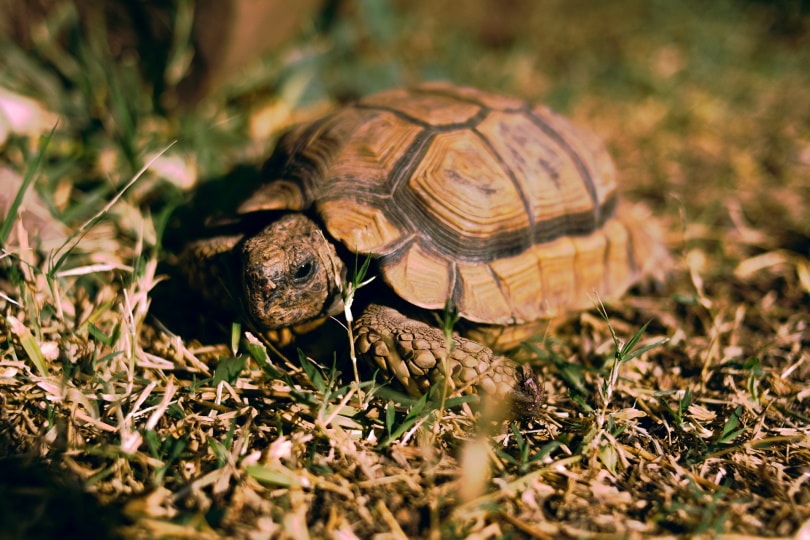
As already discussed, the most unique and distinctive feature of these tortoises is their flat shells. There are small gaps between the plates on these shells, which allows them to fit into the piles of rocks they call home.
The shell of an adult pancake averages about 7 inches with a 1-inch tail, and it might weigh about 1 pound.
The shell is usually a yellowish-tan color with dark brown rings, and each plate on the shell has a different pattern. The legs and tail are also yellowish-tan, tan, or brown.
How to Take Care of the Pancake Tortoise
Habitat, Tank Conditions & Setup
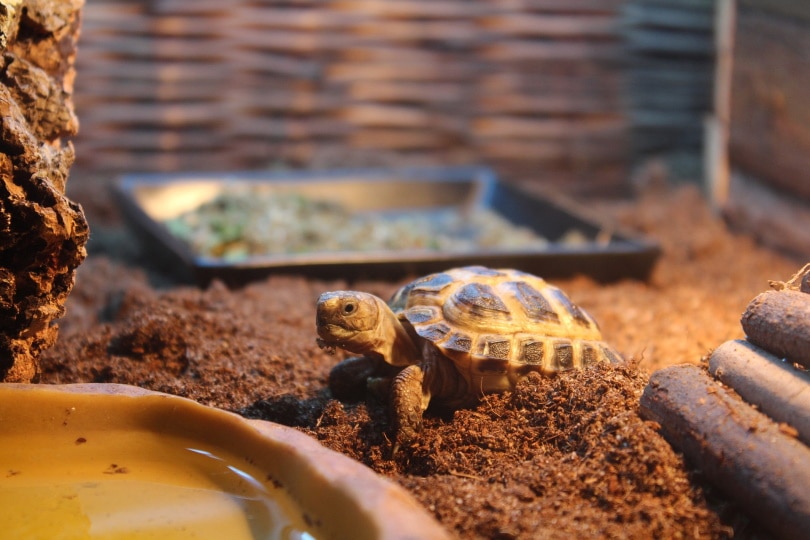
Terrariums or an outdoor enclosure, if you live in a suitable climate for your tortoise, will work well. A 40-gallon terrarium that is well-ventilated and a 4’ x 4’ outdoor enclosure per adult tortoise that is at least 1 foot tall should be the minimum size. Add an extra 2 square feet for each additional tortoise in the enclosure.
The pancake tortoise is an excellent climber, so you need to be sure that the top of its habitat has a screen to stop it from climbing out or from predators getting in. These tortoises do not hibernate, so be sure to bring them inside when the weather turns colder.
You must also provide a place for your pancake tortoise to hide and climb. Build your own pile of rocks (shale would be great since it’s flat and easy to stack) or buy a faux den that can act as a shelter as well as a basking area. Two different hiding spots in your tortoise’s enclosure are best. Typically, one in the cool area and one in the warm part of the terrarium (more on temperature later).
Substrate
Tortoises do like to dig, so the substrate needs to be relatively loose. There’s a variety of material you can use that would be appropriate for your tortoise. Suitable material can include:
Water and Humidity
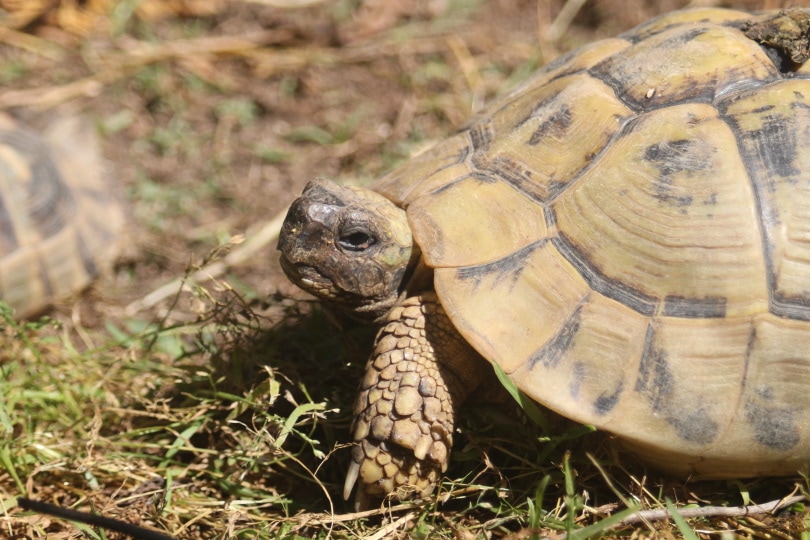
First, you need to provide your pancake tortoise with a shallow bowl of water, which is big enough to allow your pet to soak in. Be prepared, however, to clean this bowl several times each day as they tend to poop in it, and the water must be clean at all times. Of course, this also makes cleaning the enclosure easier in the long run. It will help if you keep the food and water bowls far apart from each other.
Humidity is not a factor for adult tortoises, so misting down the enclosure isn’t necessary.
Temperature and Lighting
Temperature is very important for pancake tortoises. They require a cool side and a warm side within the same enclosure as they need to thermoregulate their own body temperature. The cooler temperature should sit at about 70° to 75° F, and you need to set up a hotspot, preferably with a ceramic heat emitter. It should raise the temperature in that spot up to 100° to 108° F and must be kept on at all times.
There are lights on the market that combine heat, UVA, and UVB all in one. Mercury vapor lamps work best and place the bulbs about 2 feet away from the bottom of the terrarium. The lights should be left on for 12 hours and switched off for the other 12 to mimic natural day and night cycles.
Do Pancake Tortoises Get Along with Other Pets?
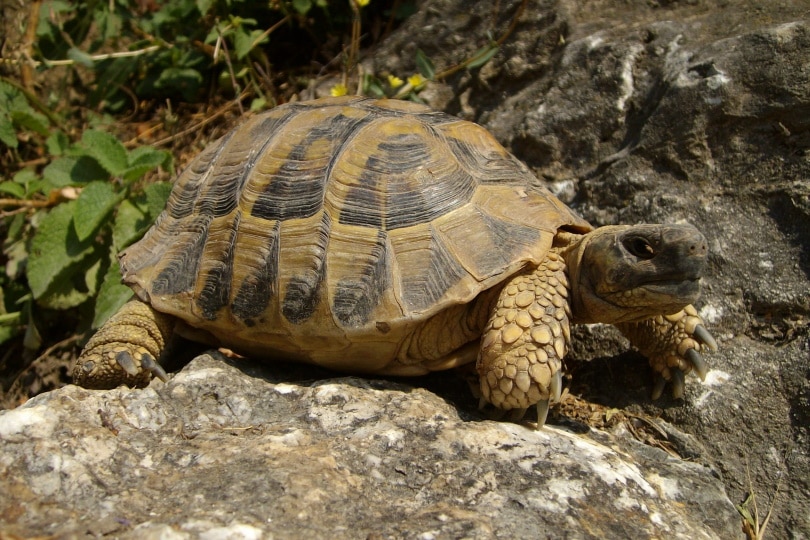
The pancake tortoise lives in small colonies and sometimes will share the same small space or crevice, but otherwise, the colonies are isolated from each other. The pancake tortoise is not aggressive, and even if it bites, it’s not harmful, so it can get along nicely with other turtles. As long as there’s enough food for everyone, they will get along in a group.
What to Feed Your Pancake Tortoise
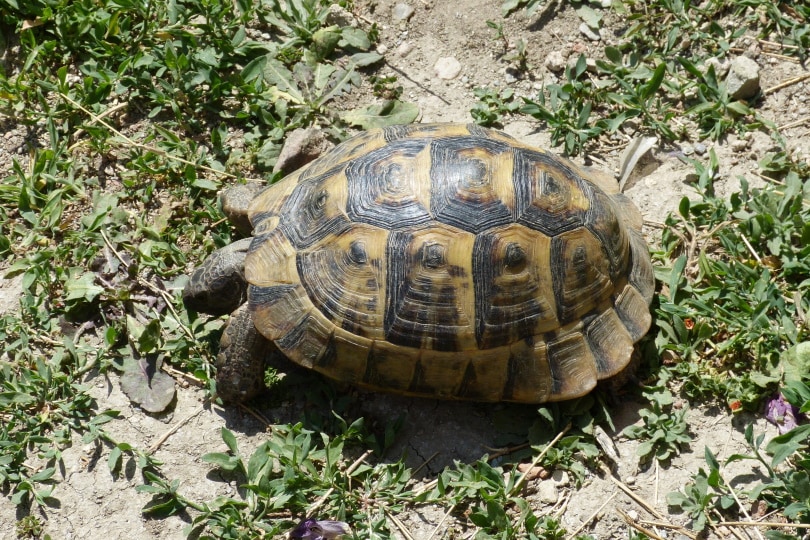
The pancake tortoise generally grazes on a variety of grasses in the wild and will thrive on fresh-cut grass, vegetables, and greens. You can feed them hay, endive, kale, dandelion, carrots, squash, leaves, and so on. Their food should be supplemented with multivitamins and calcium.
You can give them the occasional fruit as a treat but generally only a small amount once a month. If you keep them outdoors, you can even let them graze on your lawn, provided you haven’t sprayed it with any pesticides. They enjoy dandelion flowers and bear in mind that they require a lot of calcium so expect to add a reptile calcium supplement to every meal.
Keeping Your Pancake Tortoise Healthy
All of the above are paramount for keeping your pancake tortoise healthy. The appropriate gradient temperature, two hiding spots, the proper lighting, substrate, and food, and keeping their water clean are all ways to keep your tortoise healthy and happy.
If your tortoise is active throughout the day, moves quickly, and its shell is smooth and firm, and there are no signs of injury or illness, your tortoise is in good health.
These tortoises are known to live to at least 20 years, and there are even those that live easily beyond 35 years! Tortoises are absolutely a long-term commitment pet!
Breeding
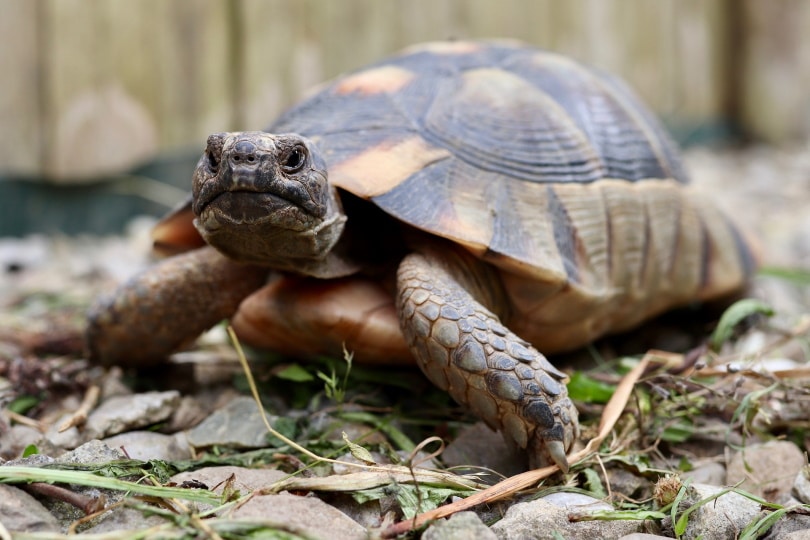
Pancake tortoises in the wild tend to breed from January to February, but these tortoises in captivity can breed all year round. Male tortoises will fight for the opportunity to breed with the females, and not surprisingly, the larger males are usually successful.
Females only lay 1 egg at a time in loose, sandy soil where they incubate for 4 to 6 months at about 86° F. When the young tortoises hatch, they are only about 1 to 2 inches but are fully independent.
Incubating the egg at 86° to 89° F will work, but if you induce cooler temperatures, the hatchling will more likely be male, and higher temperatures will give you a female.
Are Pancake Tortoises Suitable For You?
Pancake tortoises are incredibly interesting reptiles, particularly in comparison to other tortoises. It’s not every day you can see a tortoise running to safety rather than withdrawing into its shell! Again, be sure you only purchase one that was born while in captivity.
If you’re looking for a tortoise who can run and climb and will recognize you and appreciate a good neck scratching, check out the pancake tortoise.
Featured Image Credit: Nick Greaves, Shutterstock








